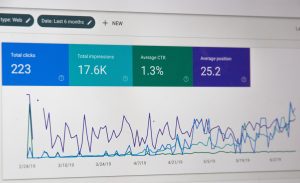Welcome to our complete guide to making your website more user-friendly for your customers. In this article, we’ll explore best practices in website design and SEO strategies to help you optimize your online presence and attract more qualified visitors. By following these tips, you will be able to outperform your competitors and significantly improve your ranking in Google search results.
1. Understanding your customers’ needs
One of the most important aspects of creating a user-friendly website for your customers is understanding their needs and expectations. You need to know your target audience, know what they’re looking for, and understand how they interact with your site. Here are some strategies to achieve this:
Conduct in-depth research on your target audience : Analyze the demographic data, preferences and behaviors to better understand them.
Use analytics tools : Analytics tools like Google Analytics can give you valuable information about user behavior on your site, the most popular pages, and the keywords used to find you.
Use surveys and feedback : Engage with your customers using surveys and feedback to gather information about their experience on your site and their suggestions for improvement.
2. Optimizing the structure and content of your site
Now that you have a deep understanding of your target audience, it’s time to optimize your website structure and content to deliver a great user experience. Here are some tips to achieve this:
Create a clear and intuitive structure : Organize your site logically with easy-to-understand navigation. Use categories and subcategories to organize your content.
Write quality content : Write informative, relevant and engaging content that meets the needs of your target audience. Use relevant keywords in a natural way and avoid keyword stuffing.
Opt for a responsive design : Make sure your site is optimized for all devices, including smartphones and tablets. Responsive design ensures a smooth and pleasant user experience, which is appreciated by Google.
Include engaging media : Enrich your content with relevant images, videos and infographics. These captivating visual elements will make your site more attractive and improve visitor engagement.
3. Advanced SEO Strategies
Now that you’ve optimized your site structure and content, it’s time to implement advanced SEO strategies to improve your Google rankings. Here are some effective techniques:
Keyword research : Conduct an in-depth keyword research relevant to your industry and incorporate them strategically into your content.
Create quality backlinks : Backlinks from reputable and relevant websites boost your credibility in the eyes of Google. Work on partnerships, link exchanges, and guest content creation to get quality backlinks.
Why is the meta description tag important in SEO ?
The meta description tag does not directly affect your SEO. However, it is essential, because it is the one that has the greatest impact on the percentage of clicks that you will obtain from the Google results page.
How to optimize the meta description tag for SEO ?
The description tag must be placed after the “title” tag which corresponds to the document header “/head”.
The 4 essential criteria of the meta description tag:
Keywords : Insert the main keywords for which your page is optimized, this will show the user that your page perfectly meets their request.
The length of your meta description : should remain descriptive and between 150 and 160 characters for optimal length, and this includes spaces. Additionally, you also want to make sure you accurately summarize the content of the page. While there is no minimum or maximum meta title length for description text, Google recommends making sure it is long enough to be fully displayed in Google results (note that users may see snippets of different sizes depending on how and where they search).
Use unique descriptions for each page : Having a different meta tag description for each page helps both users and Google, especially in searches where users may view multiple pages on your domain.
Naturally include your main keyword and related keywords
Attractiveness : The meta description is not only intended for search engines, but also for Internet users who will come to your site if the description is attractive and describes what they are looking for. Google understands if your site is attractive? No, but it understands what users click on. This is the famous “Click Through Rate” (CTR), did people click on your link or not. So we have to make them want it. Create content regularly: Maintain a regular publishing schedule by adding fresh, quality content to your site. This shows Google that your site is active and worthy of ranking.
Conclusion
By following these tips and implementing web design and SEO best practices, you will be able to make your website more customer-friendly and improve your ranking in Google search results. Remember to monitor your site’s performance regularly and make adjustments if necessary.

